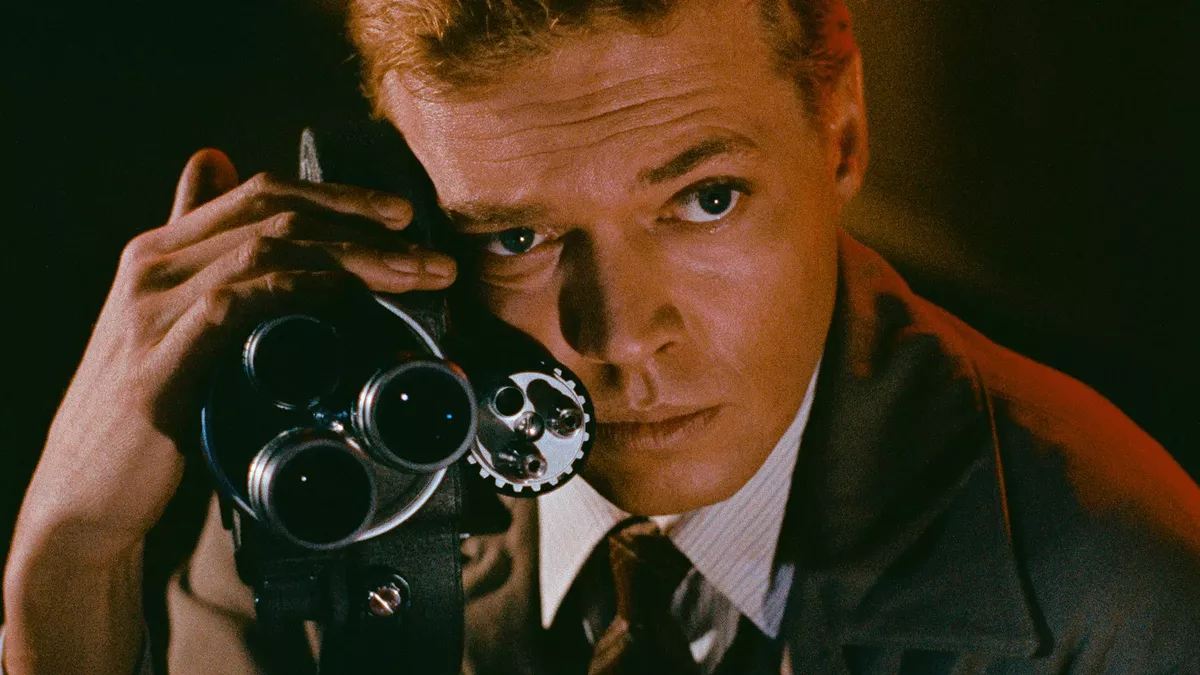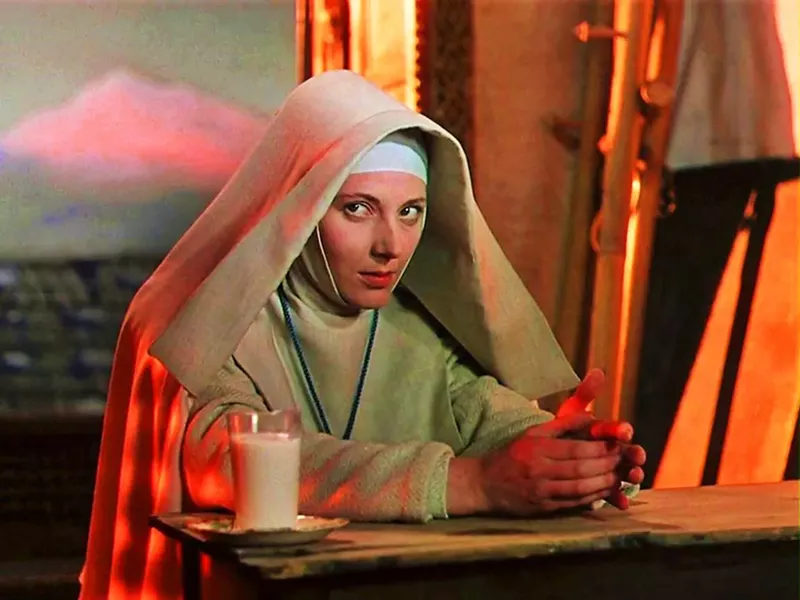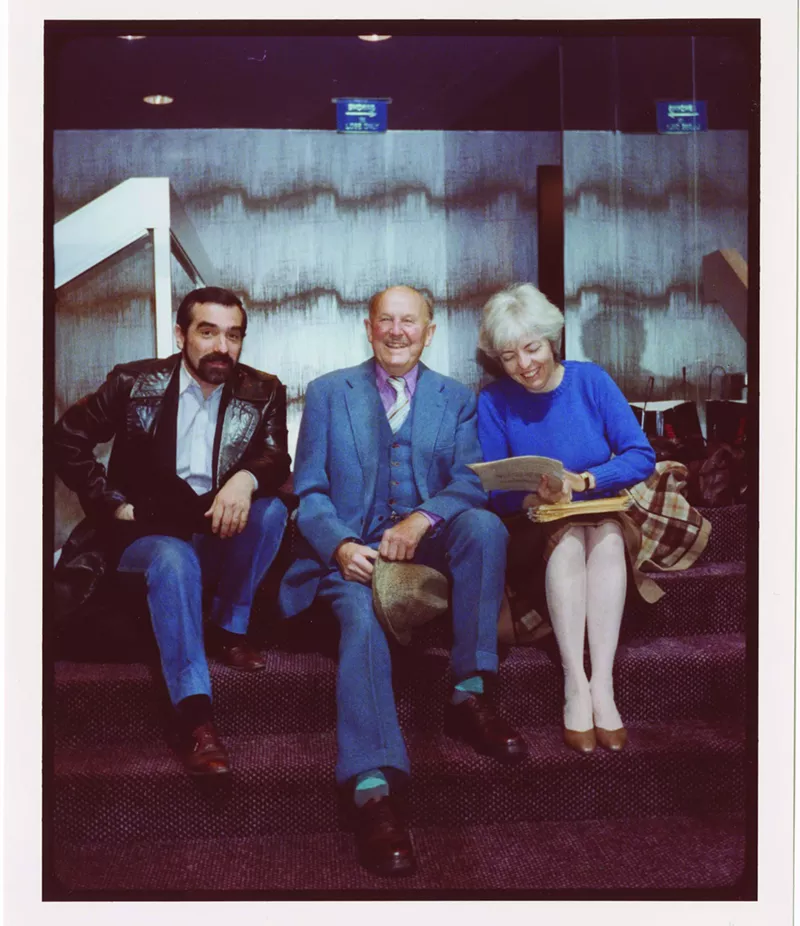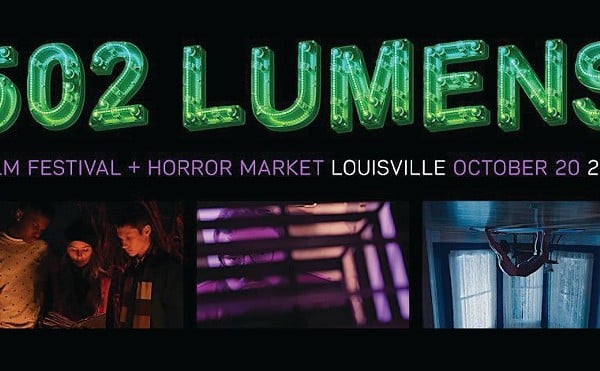What makes a movie not merely good or entertaining, but great? Great films are made by artists who lean into the unique facets of the art form and cast a spell using camera movement, special effects trickery, music, and controlled sound. They coax complex performances out of actors who practice their medium in the vacuum of a film set, reaching out for understanding from an audience they will never see. And great films often are a product of their time, an answer to the immediate needs of the world around them, but with insights into the human condition that transcend the time in which they were made. Great films, like myths and fairy tales, are timeless.
Michael Powell and Emeric Pressburger understood that they were magicians, and lived their professional careers as brothers in film. The English Powell and the transplanted Hungarian Pressburger were stars of British World War II cinema, working under the title The Archers. Their early films “The 49th Parallel” and “The Life and Death of Colonel Blimp” went beyond wartime propaganda, and made them stars.The mass popularity of their film and their tireless commitment to pushing the art form afforded them early freedom and funding, and they made several masterpieces, three of which are playing the Speed Cinema in this limited retrospective run.
First came “Black Narcissus.” A luscious and hothouse nunnery drama set in the Himalayas, its’ incredible sets create an otherworldly and suffocating atmosphere of a secluded life on the brink of breakdown. It is an erotic masterpiece, lush in color, and full of rich performances that center the experiences of women. They followed up this hit film with “The Red Shoes,” an adaptation of Hans Christen Anderson’s tragic tale of a dancer who is betrayed by her magical ballet shoes. It is a film that explores the world of ballet, both backstage and on. Using elements that would later come to define magic realism, they created a film that is often listed as their best, a classic fairy tale that has influenced all dance films to come.
The third movie in the retrospective, and the only film that is solely directed by Michael Powell, is “Peeping Tom,” a film pariah hidden away for decades. It is a cult film and a legend for its luridness and the critical upset it caused in 1960 when it was released just months before Hitchcock’s “Psycho” changed the film landscape. The film follows Leo Marks, a cinephillic killer, obsessed with filming women as he murders them. “Peeping Tom” is a study in voyeurism and a direct challenge to the audience. It asks what responsibility does the director have for the magic they create, especially when it is a dark magic. It is a must see for horror fans and people who like to think about the function of film. It famously ended Michael’s Powell’s storied career, and it would not be until 1975 that audiences could see the film again, thanks to a super fan named Martin Scorsese.
Scorsese is the star film historian in the new documentary “Made in England: The Films of Powell and Pressburger,” also playing the Speed Cinema. He first felt the spell of P&P as an asthmatic kid watching “The Thief of Bagdad” and “The Tales of Hoffman” on a tiny black and white television, both fantastic feats of technicolor dreams come to life. Even with these technical limits, Scorsese was imprinted by their work, and names them as major influences on his own work.
Ostracized by the film world after the release of “Peeping Tom,” Michael Powell was pulled out of oblivion by the young, hotshot director, just off the release of “Mean Streets.” Scorsese led the charge to remaster and re-release many of the films, and invited Powell to be an active player behind the scenes on set until Powell’s death in 1990. It was on set that Powell met his future wife, Scorsese’s longtime editor, the brilliant Thelma Schoonmaker, making this movie family even more official.
“Made in England” is a love letter to the unique relationship and career of Powell & Pressburger, and a study of their influence on Scorsese’s own work. Any doc that features noteworthy and beautiful scenes from the P&P films is well worth a watch, and the touching love that Marty has for his filmic heroes makes it a sweet endeavor too. It is essential viewing for any student of Powell & Pressburger, and important for the cinephile who wants to understand better what makes a film great.
If you can make time over two weekends to watch four films in the cinema, please do. But, considering how short we are on time, and the hard choices we have to make, my cinematic advice would be see the documentary at home, preferably once you have watched as many Archer films as possible, from “A Canterbury Tale” to “A Matter of Life & Death.” I say this despite the fact that “Made in England” is a pleasure to watch and a rich piece of film scholarship. Rather, I am urging the cinephiles among us to go watch not one, but three films that were made with full throated passion by artists at the top of their career. Don’t miss your chance to see great films on the big screen where their spell is most forcefully cast. It may be a lifetime before you get the chance again!









